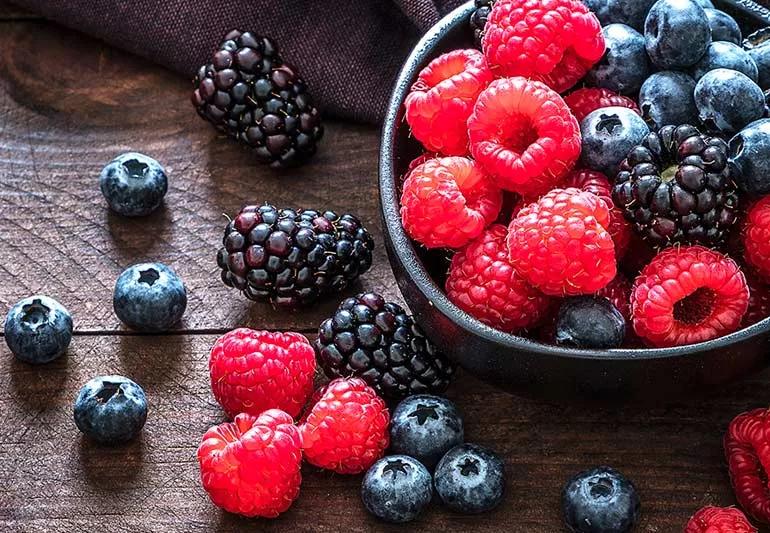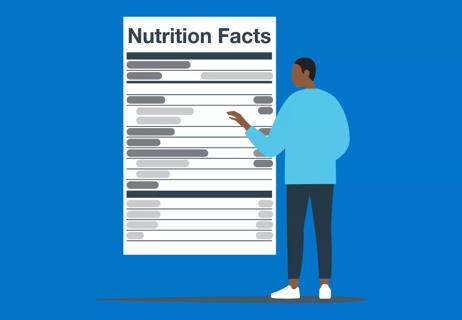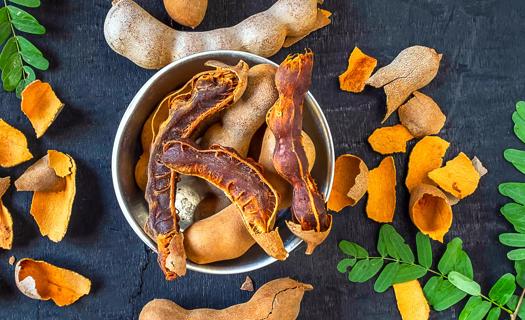Advertisement
A dietitian picks six fruits that combine great taste with nutritional value

Eating two servings of fruit every day stands as a healthy dietary goal to keep your body thriving. So, if that’s the case, why not choose fruits with the biggest nutritional bang for your buck?
Advertisement
Cleveland Clinic is a non-profit academic medical center. Advertising on our site helps support our mission. We do not endorse non-Cleveland Clinic products or services. Policy
All fruits are not created equal, after all. They all claim certain benefits, of course — but some check a few more boxes when it comes to being really good for you.
So, let’s build a shopping list with the help of registered dietitian Beth Czerwony, RD.
What can blueberries do for you? For starters, they can:
Many of the benefits connect to the high levels of antioxidants packed into the small berries. Antioxidants battle free radicals, unstable atoms in your body that can damage cells and cause illness.
Blueberries also are rich in soluble fiber to tame cholesterol levels and omega-3 fatty acids for brain health. They’re also chock full of vitamin C, Vitamin K and manganese.
And here’s maybe the biggest bonus of all: Blueberries taste great. Snack on them by the handful or toss them into yogurt, oatmeal or salads to add extra flavor. Add it all up, and it’s no wonder why blueberries have been dubbed a “super fruit.”
By the numbers:One cup of blueberries contains about 84 calories, 3.55 grams of fiber and 14.7 grams of natural sugars.
Raspberries are also full of antioxidants and nutrients called polyphenols that decrease oxidative damage. Like their “blue” berry cousin, they’re high in fiber to aid in digestion, blood glucose control and weight loss.
There’s more, too. Raspberries also are great sources of:
Somehow, too, raspberries manage to taste sweet despite being low in sugar. They’re great to eat on their own or as a flavorful addition to various dishes or smoothies.
By the numbers:One cup of raspberries contains about 64 calories, 8 grams of fiber and 5.4 grams of natural sugars.
Notice a theme yet? “Always go for berries,” says Czerwony. “They’re going to be one of the lowest sugar fruits and one of the highest in fiber. That’s a great combo to stabilize your blood sugar and keep you feeling full for longer.”
Blackberries share many of the same attributes as blueberries and raspberries — antioxidants, vitamin C, manganese, etc. The packaging and taste are just a little different.
(Pro tip: If you’re using prepackaged frozen berries of any kind, check the label to see if any sugar has been added. That’s one of several stealthy ways in which fruit can be made less healthy.)
By the numbers:One cup of blackberries contains about 62 calories, 7.6 grams of fiber and 7 grams of natural sugars.
Want an easy way to get all the vitamin C you need today? Then eat a sun-kissed orange.
One orange orb is all it takes to meet your recommended daily intake of vitamin C, an essential nutrient that can:
Advertisement
Also, eating an orange is better than drinking one. While orange juice does offer a healthy splash of vitamin C, it lacks the fiber that’s in the whole fruit. (Learn more about why 100% juice isn’t as healthy as you might think.)
By the numbers:One large orange contains about 86 calories, 4.4 grams of fiber and 17 grams of natural sugars.
An apple a day keeps the doctor away. That old phrase may be a bit of an overstatement, but there’s no question the fruit is a healthy choice. In fact, researchers found that folks who eat an apple a day use fewer prescription medications.
Apples have also been connected to improved heart health, fewer asthma symptoms and reductions in cancer risk. Many of the positives linked to apples come from the fruit’s fiber content.
Want some tips on selecting apple varieties? Then, follow this advice from a registered dietitian.
By the numbers:One medium McIntosh apple contains about 80 calories, 4.9 grams of fiber and 16 grams of natural sugars.
Enough of the common fruits. Let’s go a bit exotic for our final recommendation.
Star fruit, or carambola, is guaranteed to be a visual delight. “It’s a tropical fruit that looks like it could be a sea creature,” says Czerwony. “When you cut it on the base, it comes out looking like a star. It’s fun.”
Advertisement
It’s also pretty nutritious considering the low calorie count.
By the numbers: One medium star fruit contains about 28 calories, 2.6 grams of fiber and 3.6 grams of natural sugars.
The bottom line? Any fruit is better than no fruit. Only 1 in 8 Americans eat the recommended two servings of fruit per day, according to a report by the U.S. Centers for Disease Control and Prevention.
So, if you like grapes, buy them and eat them. Pears? Perfect. Pineapples? Who can argue with that tasty treat?
Other tips suggested by Czerwony include:
Advertisement
Learn more about our editorial process.
Advertisement

A variety of healthy foods can help reduce inflammation and keep other conditions at bay

Information on serving size, calories and nutrients can help you make healthy choices

The general rule is 0.8 to 1 gram of protein per kilogram of body weight — but that may not be right for you, and it’s important to determine what’s right for you

Adding salt to your water isn’t going to have measurable benefits — but there may be plenty of downsides

Pickles are low in fat and calories and rich in some vitamins and minerals, but they’re usually high in sodium

Learning about your relationship with food can help improve your eating behaviors and patterns

With a sweet, tangy flavor, this tropical fruit is super versatile and high in antioxidants

Full of antioxidants and nutrients, apricots may boost your eye, skin, digestive and overall health

Focus on your body’s metabolic set point by eating healthy foods, making exercise a part of your routine and reducing stress

PFAS chemicals may make life easier — but they aren’t always so easy on the human body

While there’s little risk in trying this hair care treatment, there isn’t much science to back up the claims